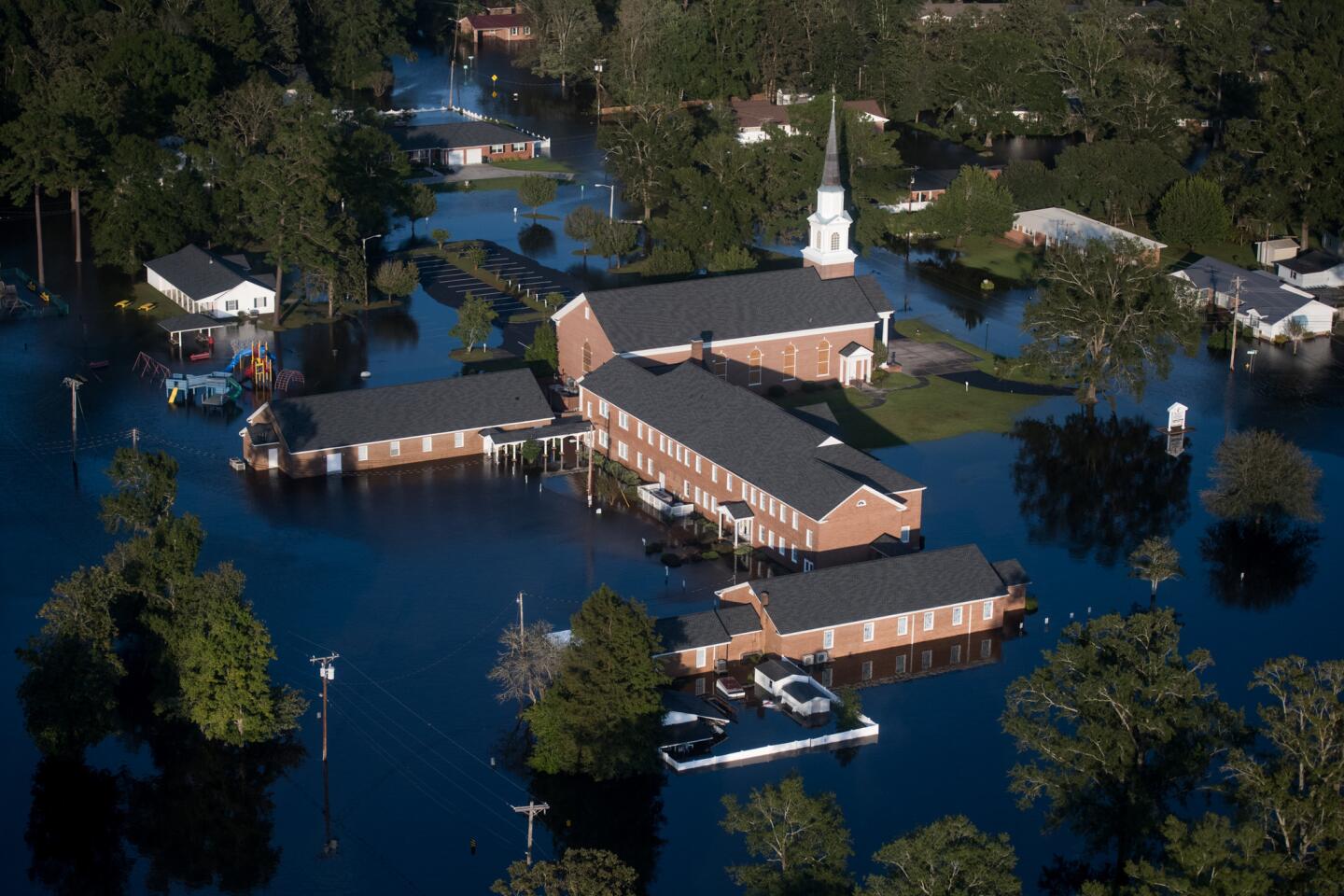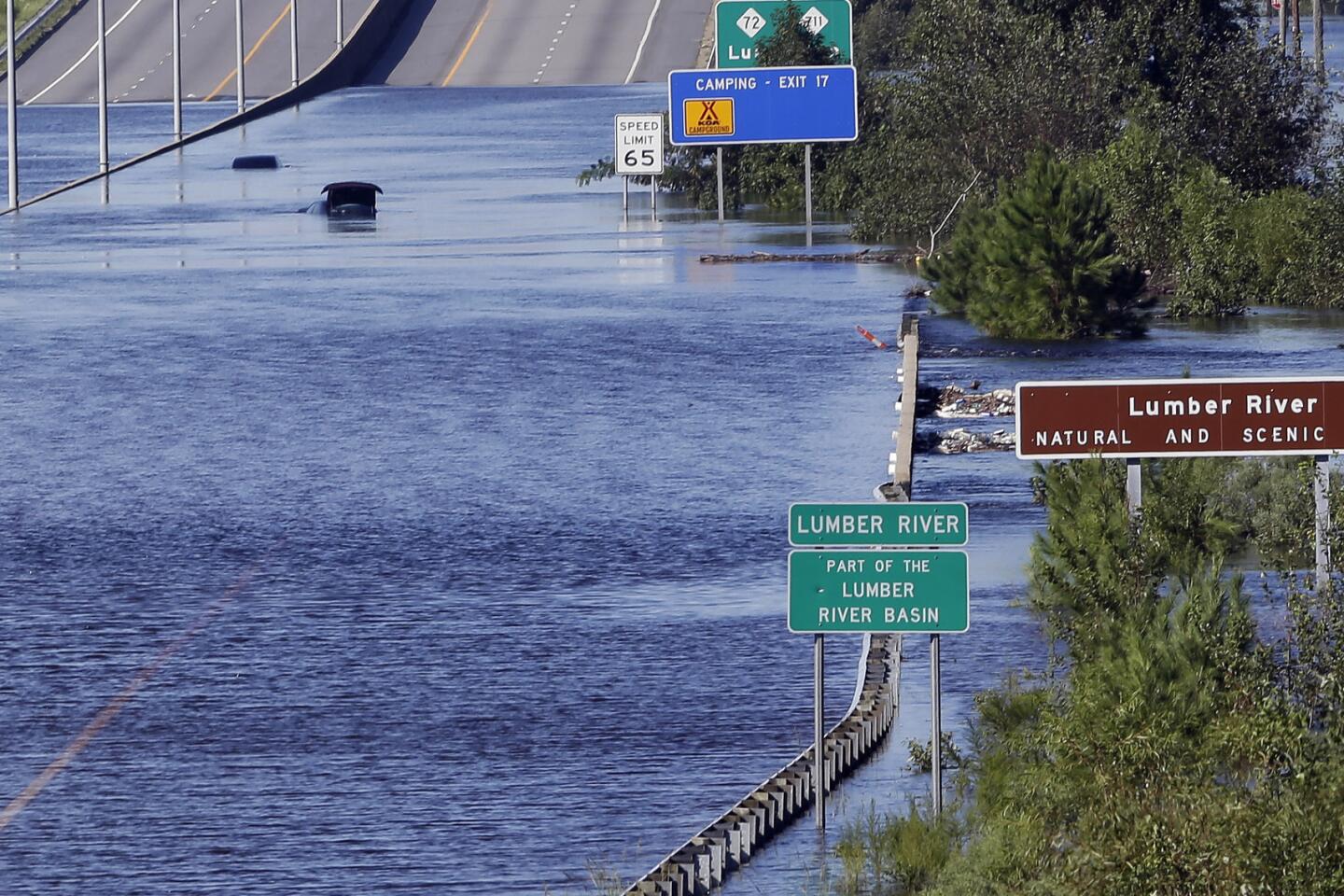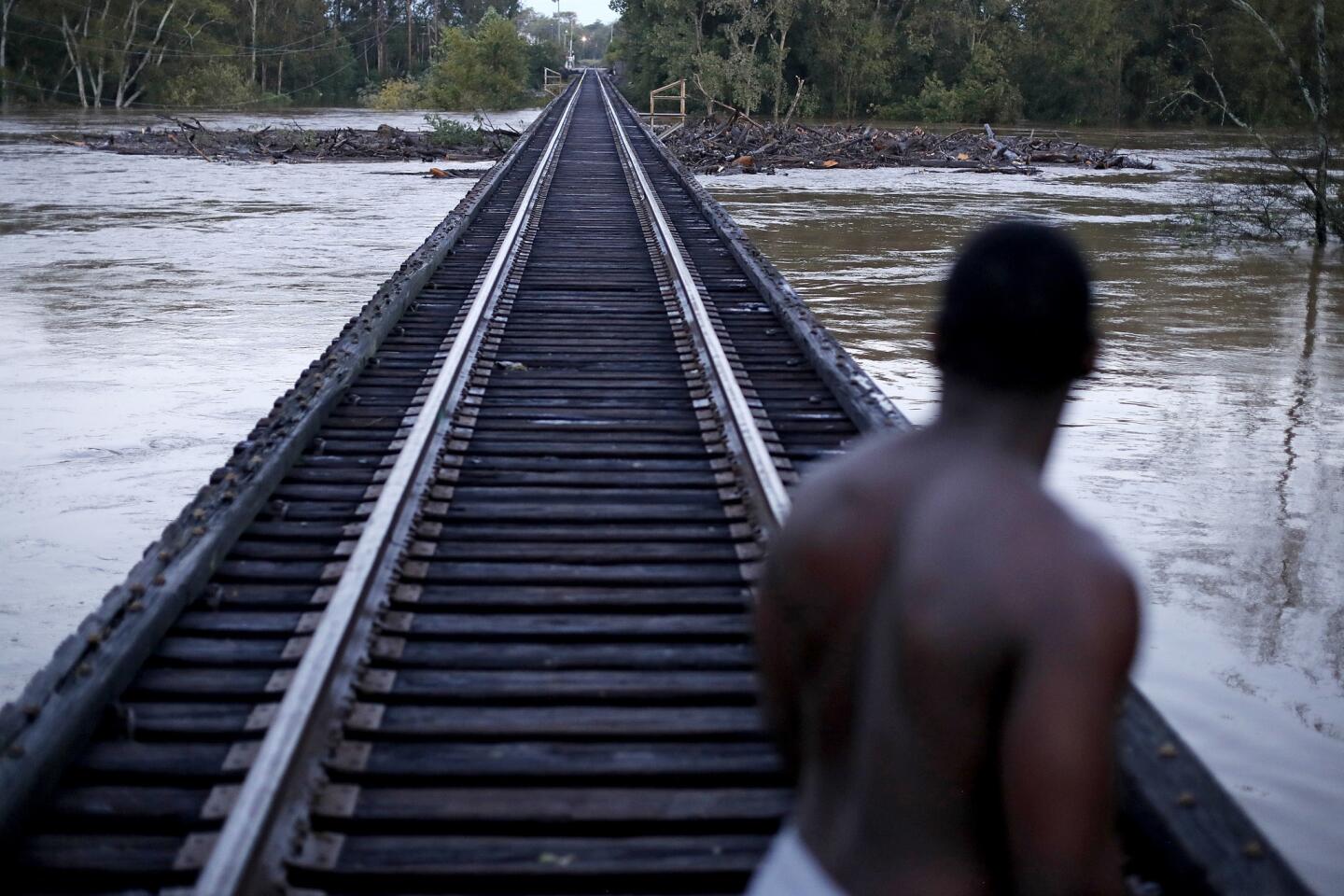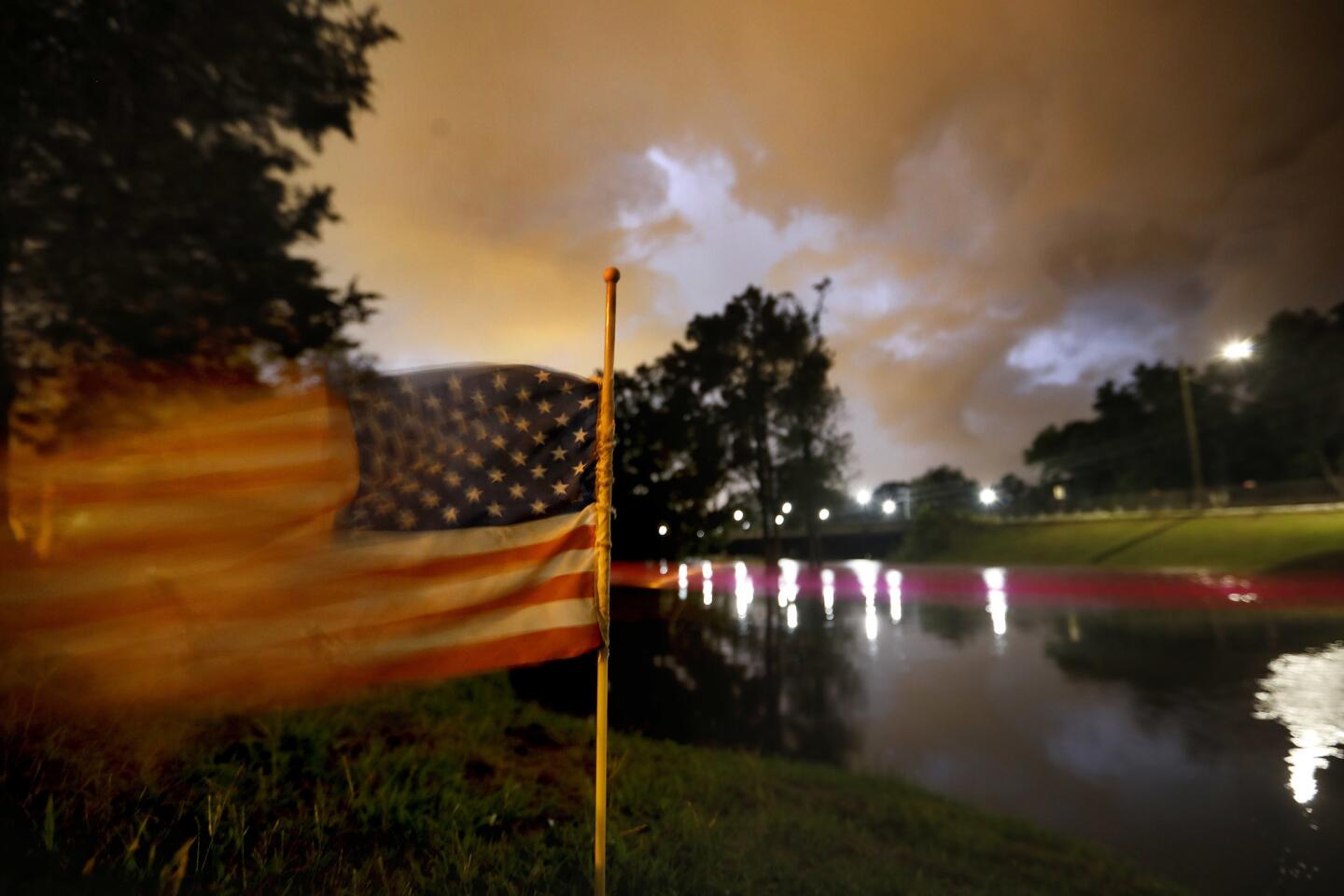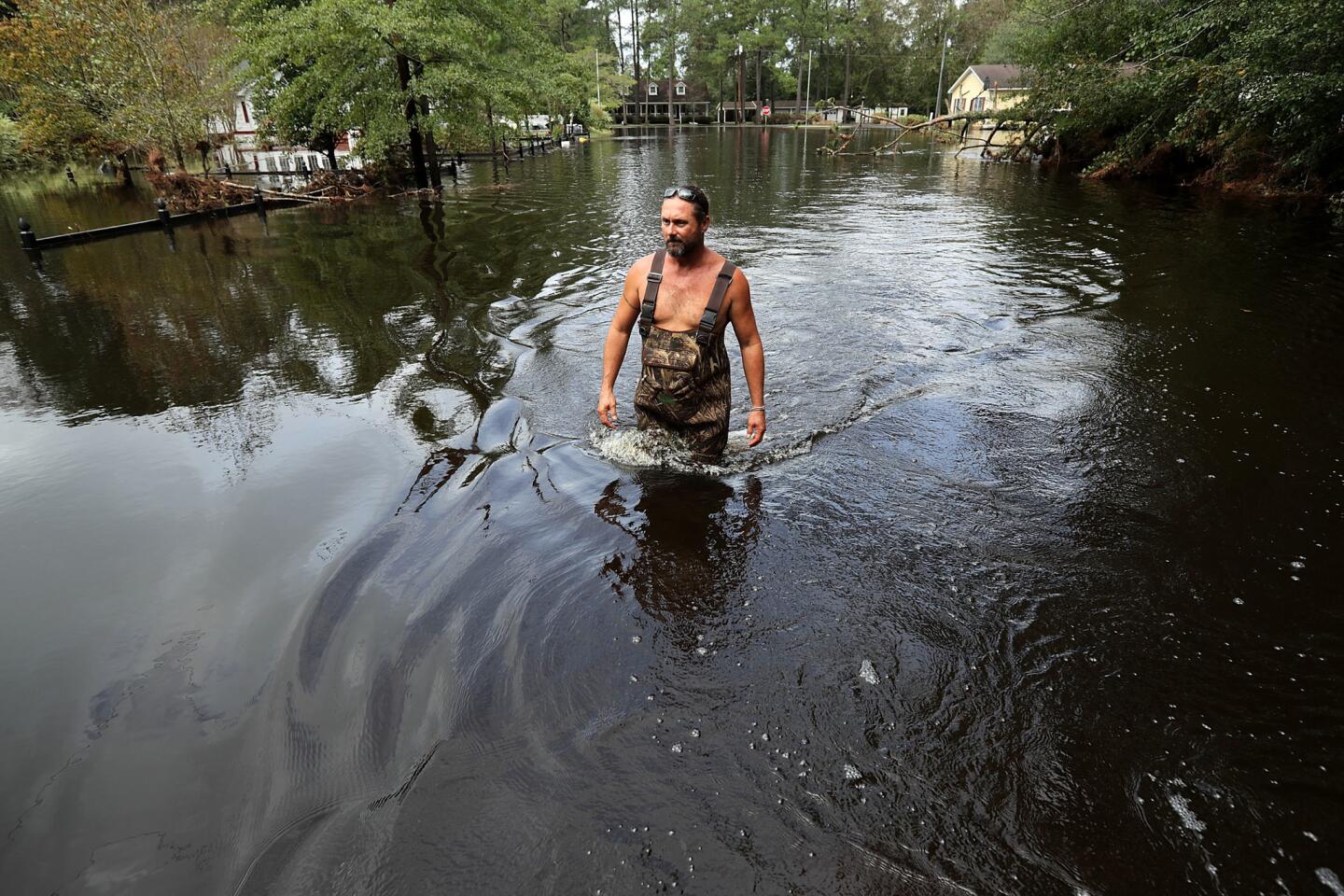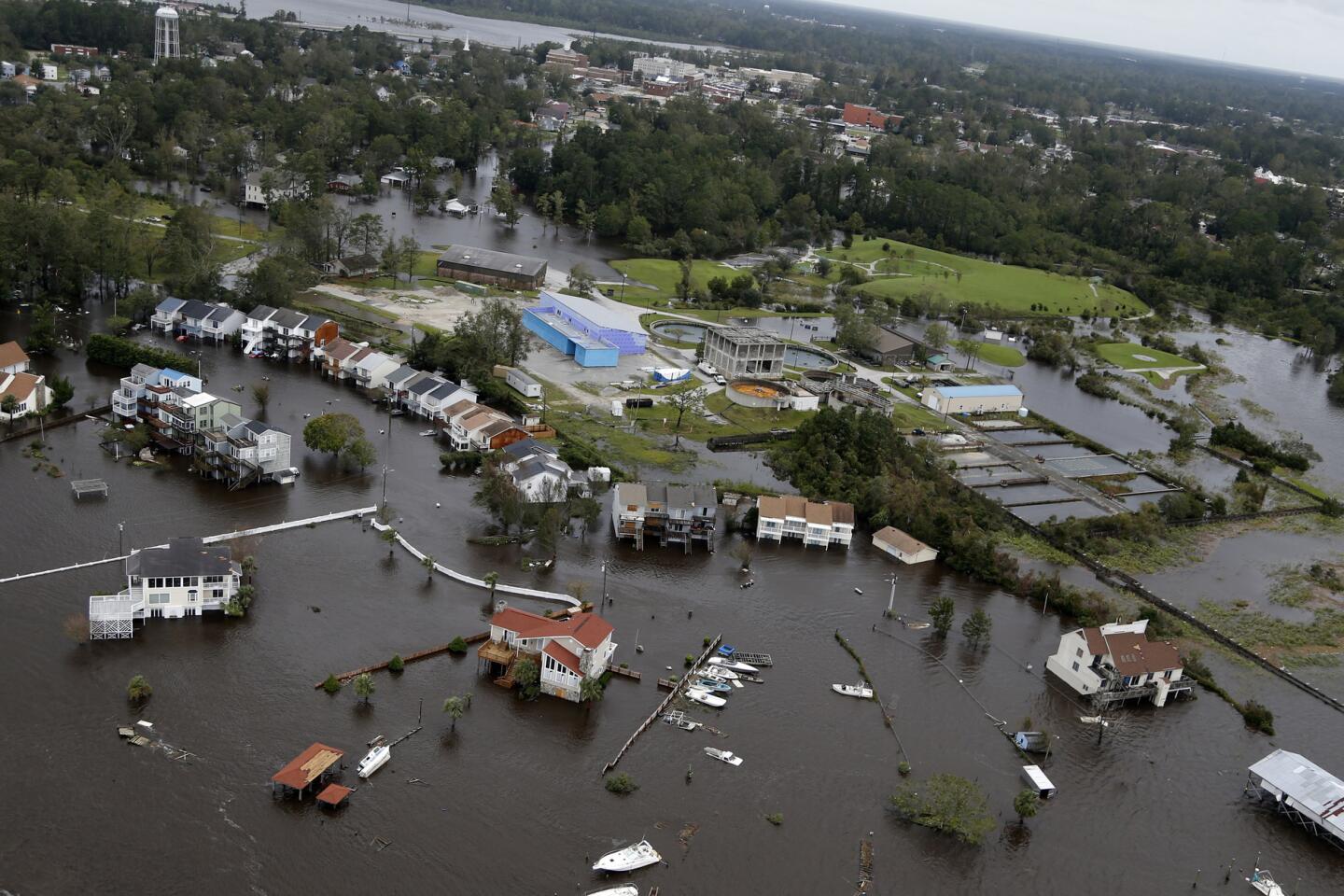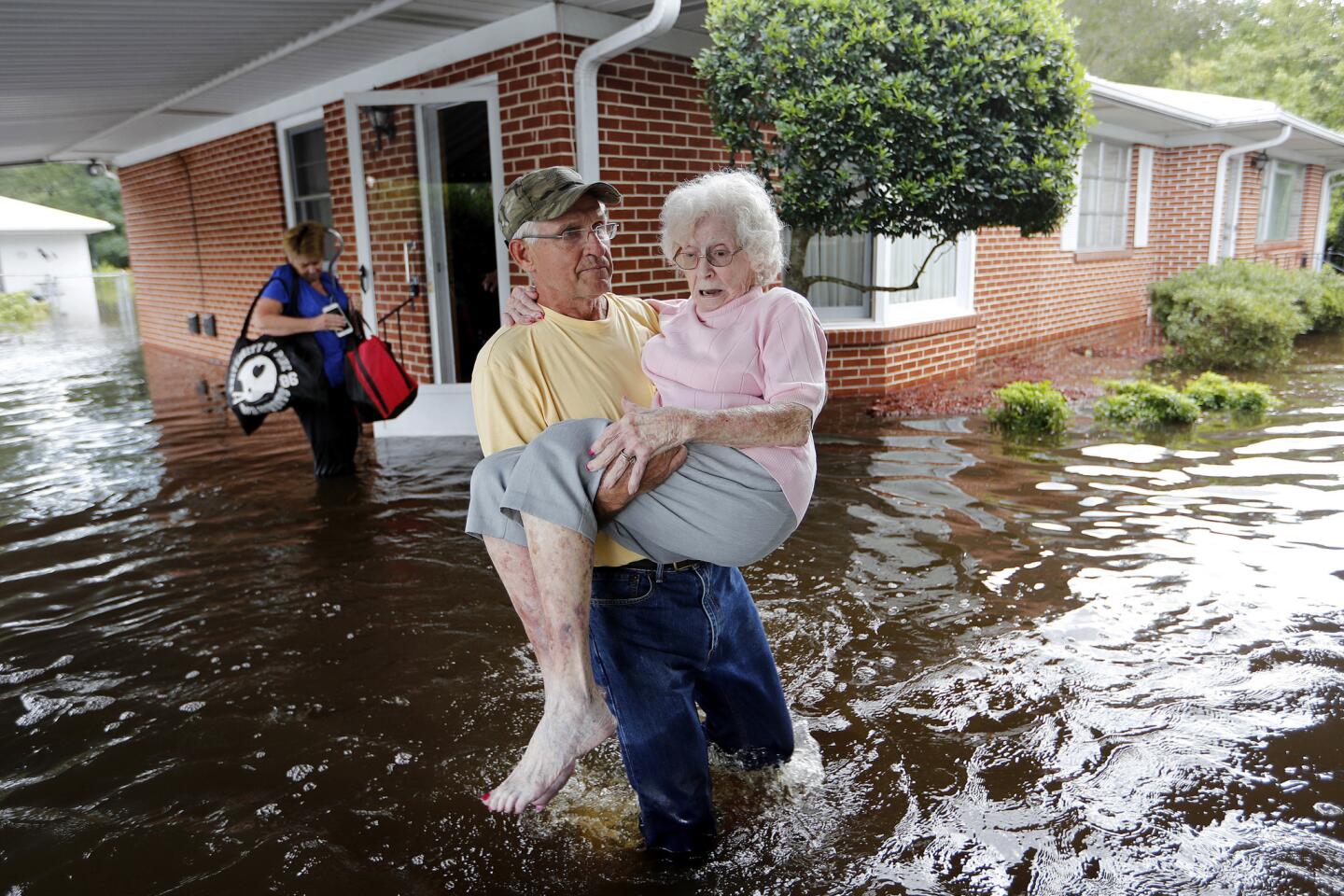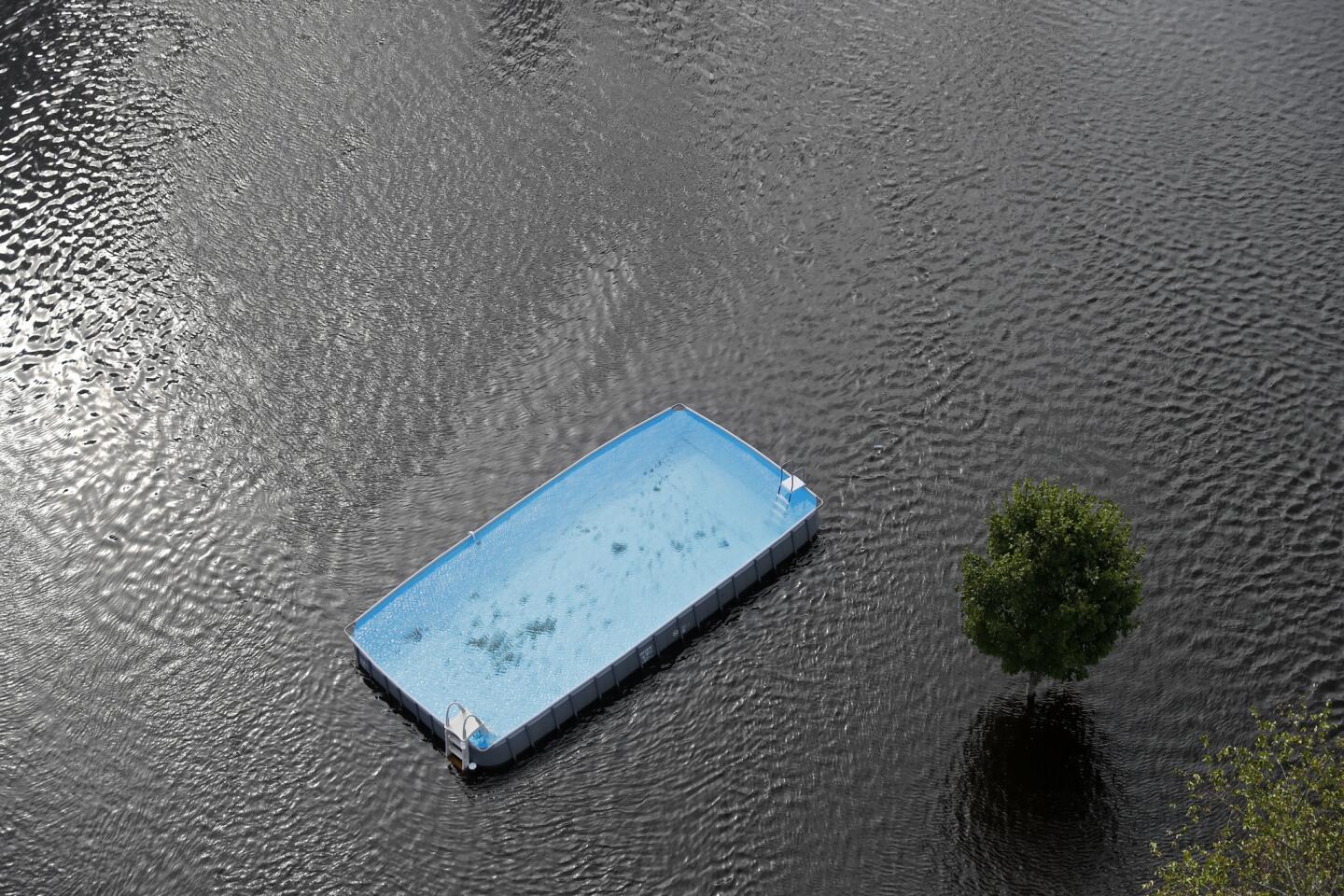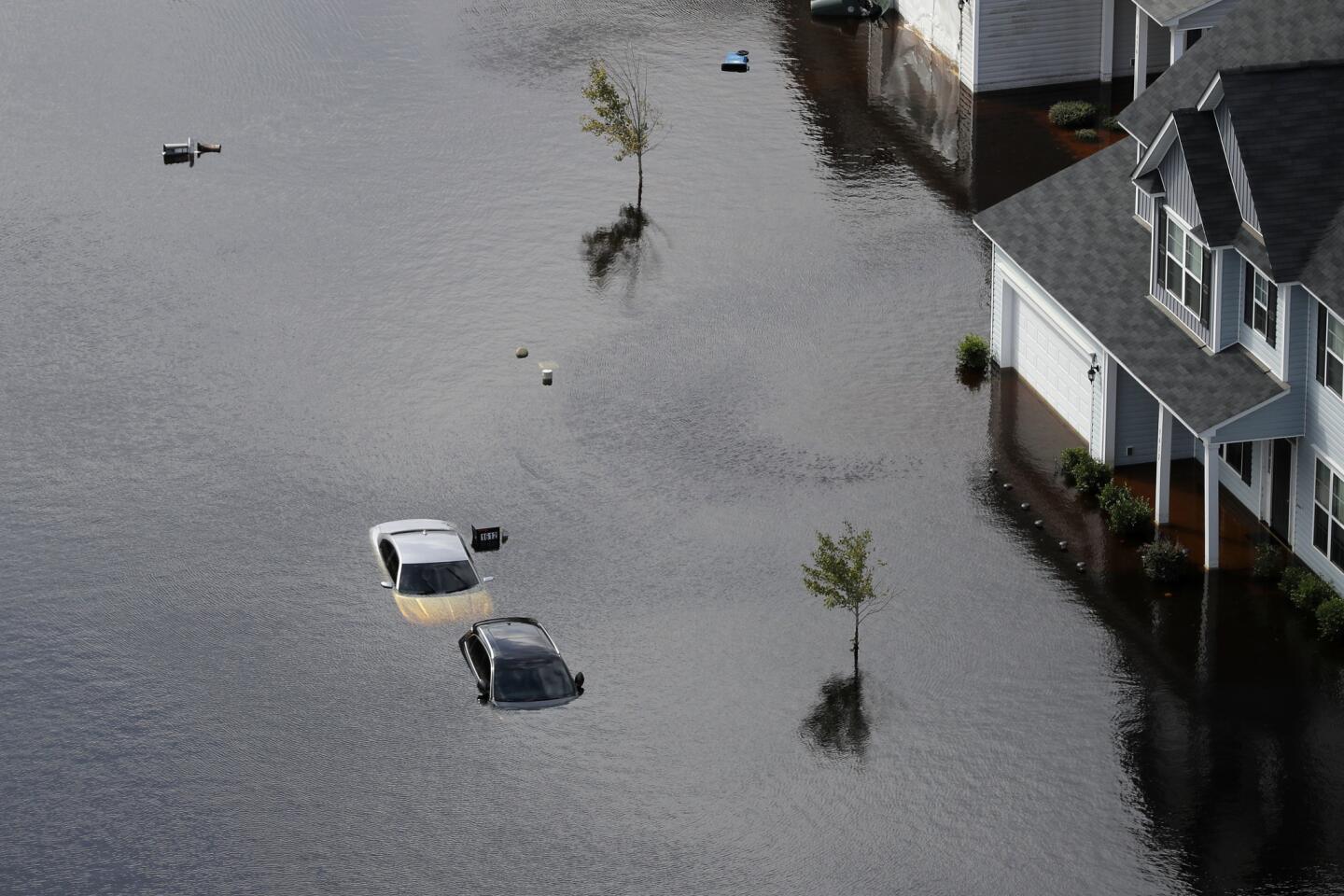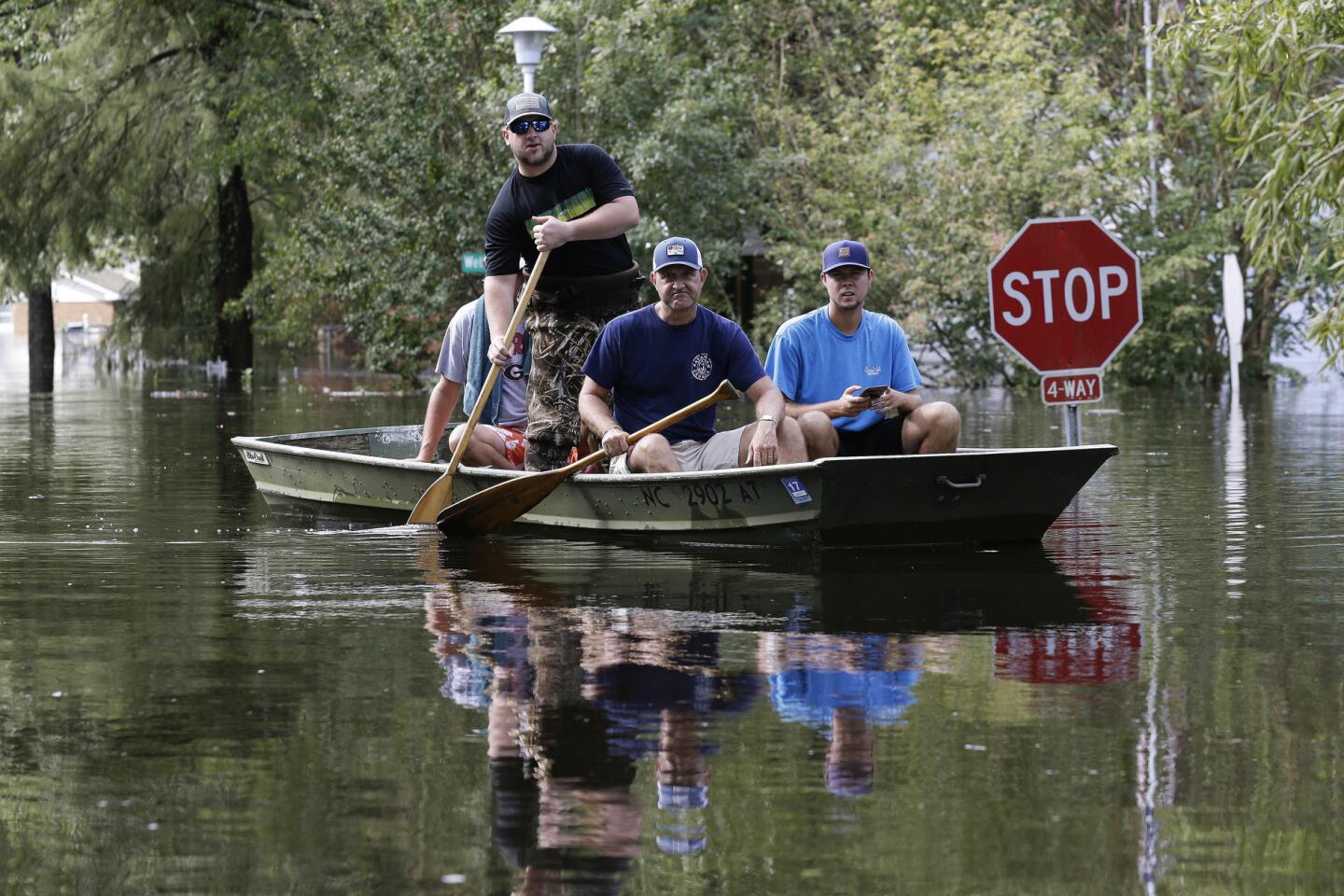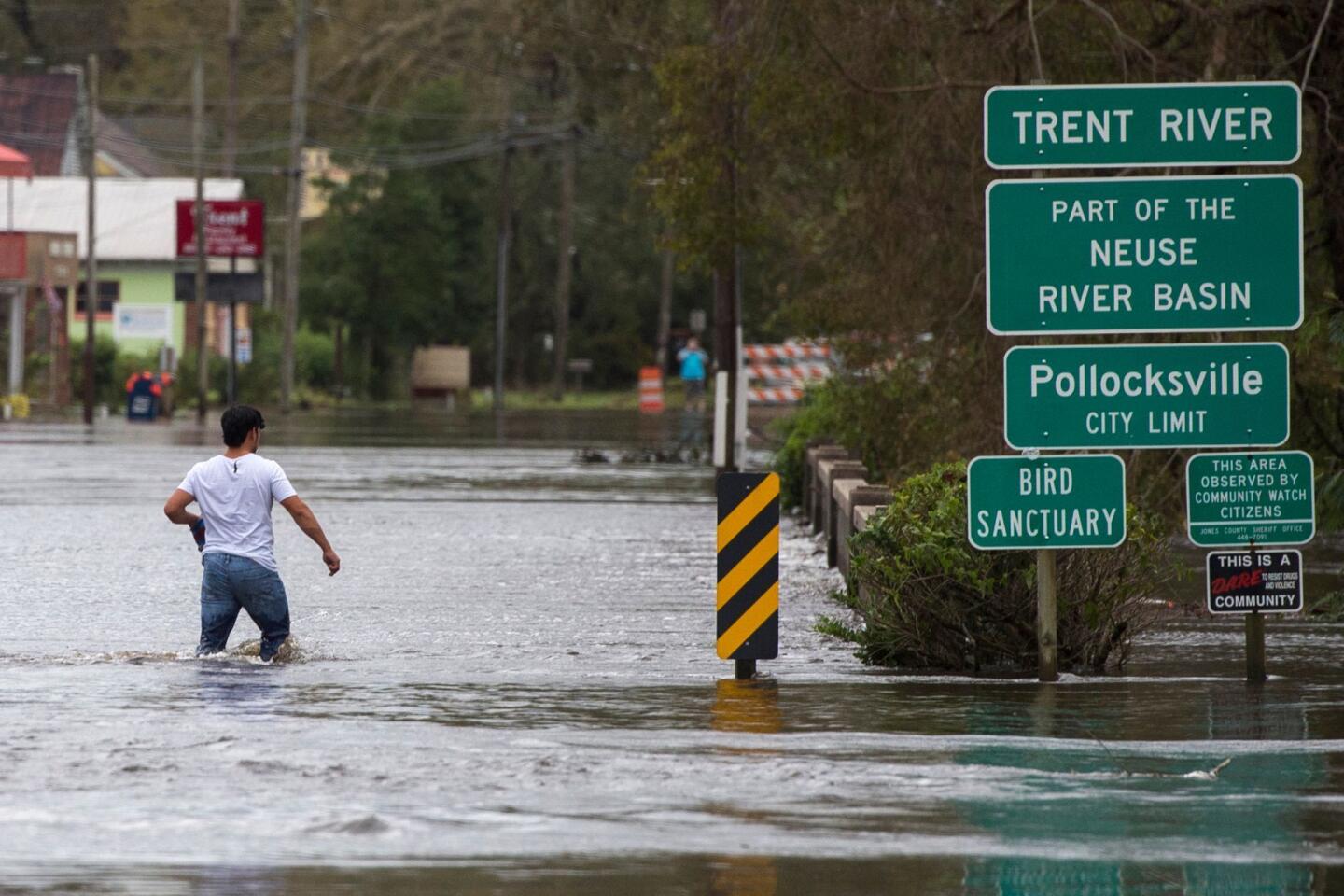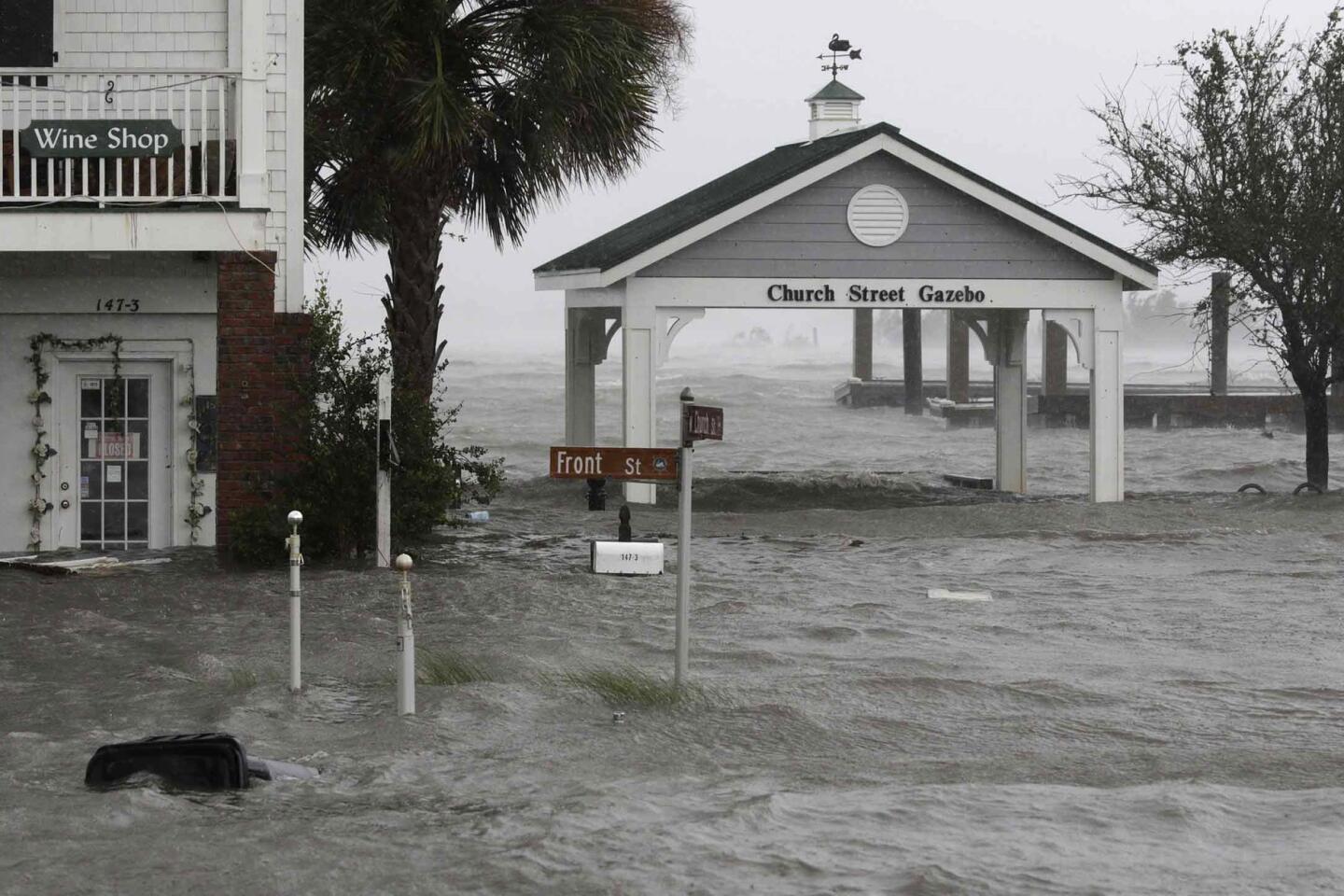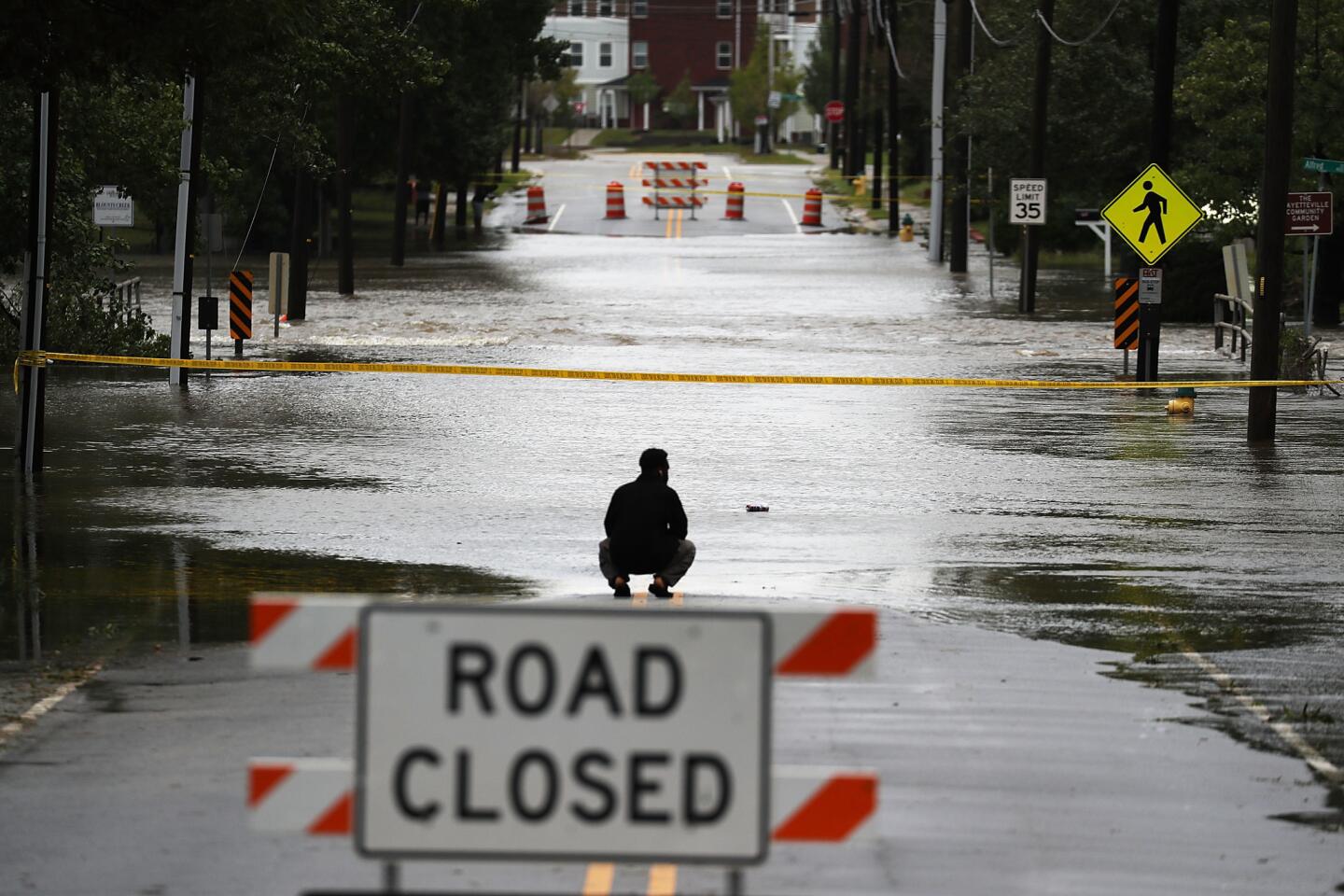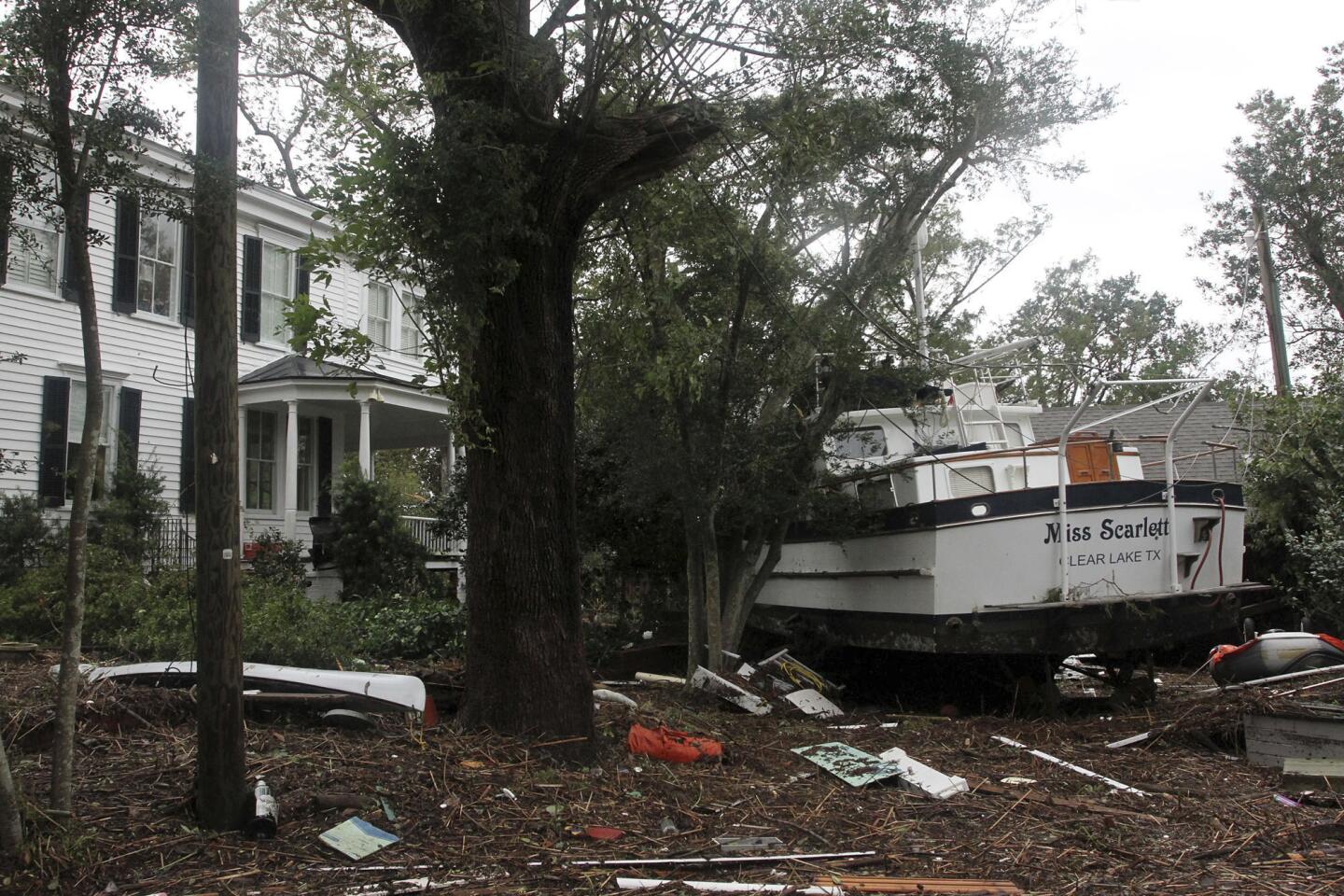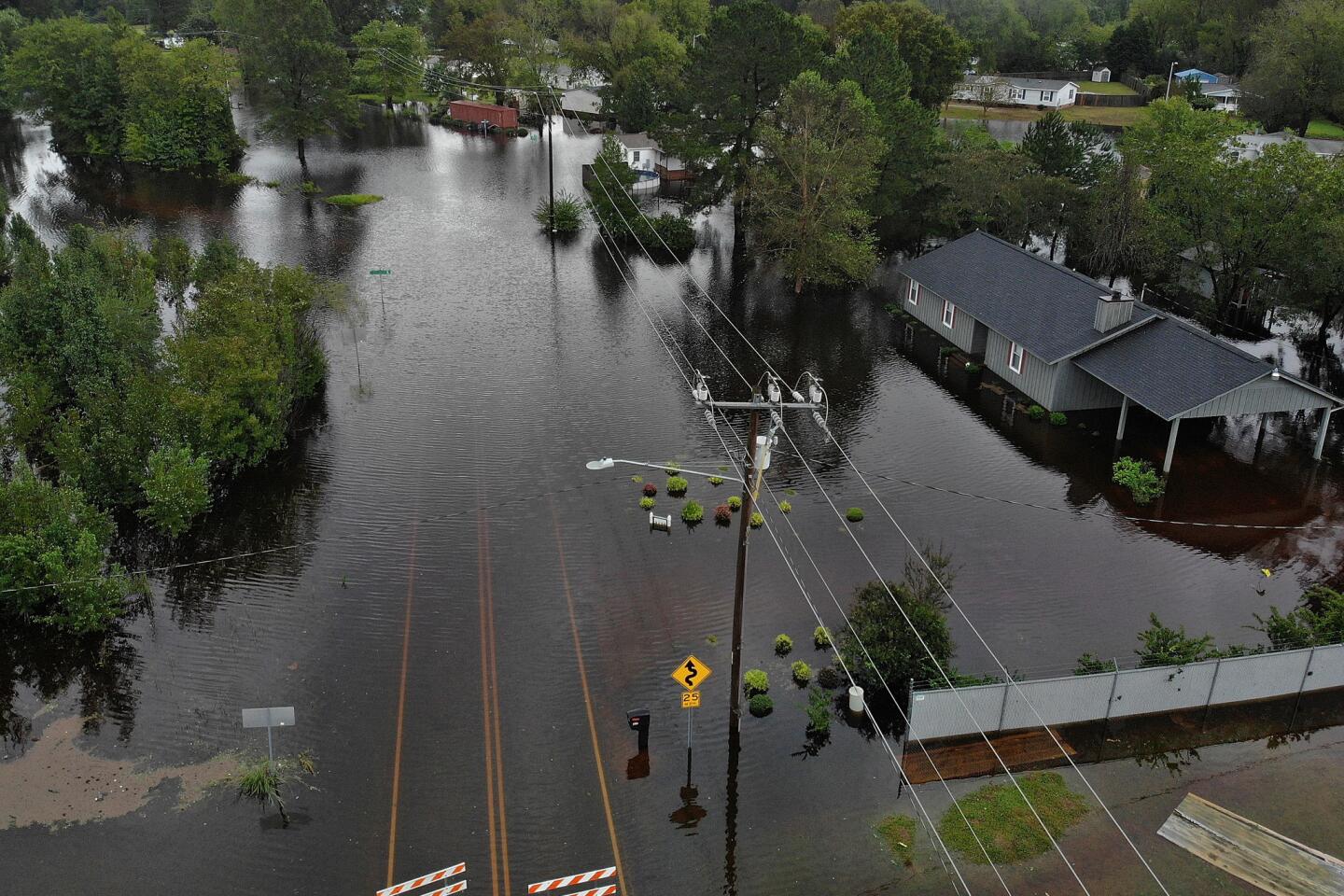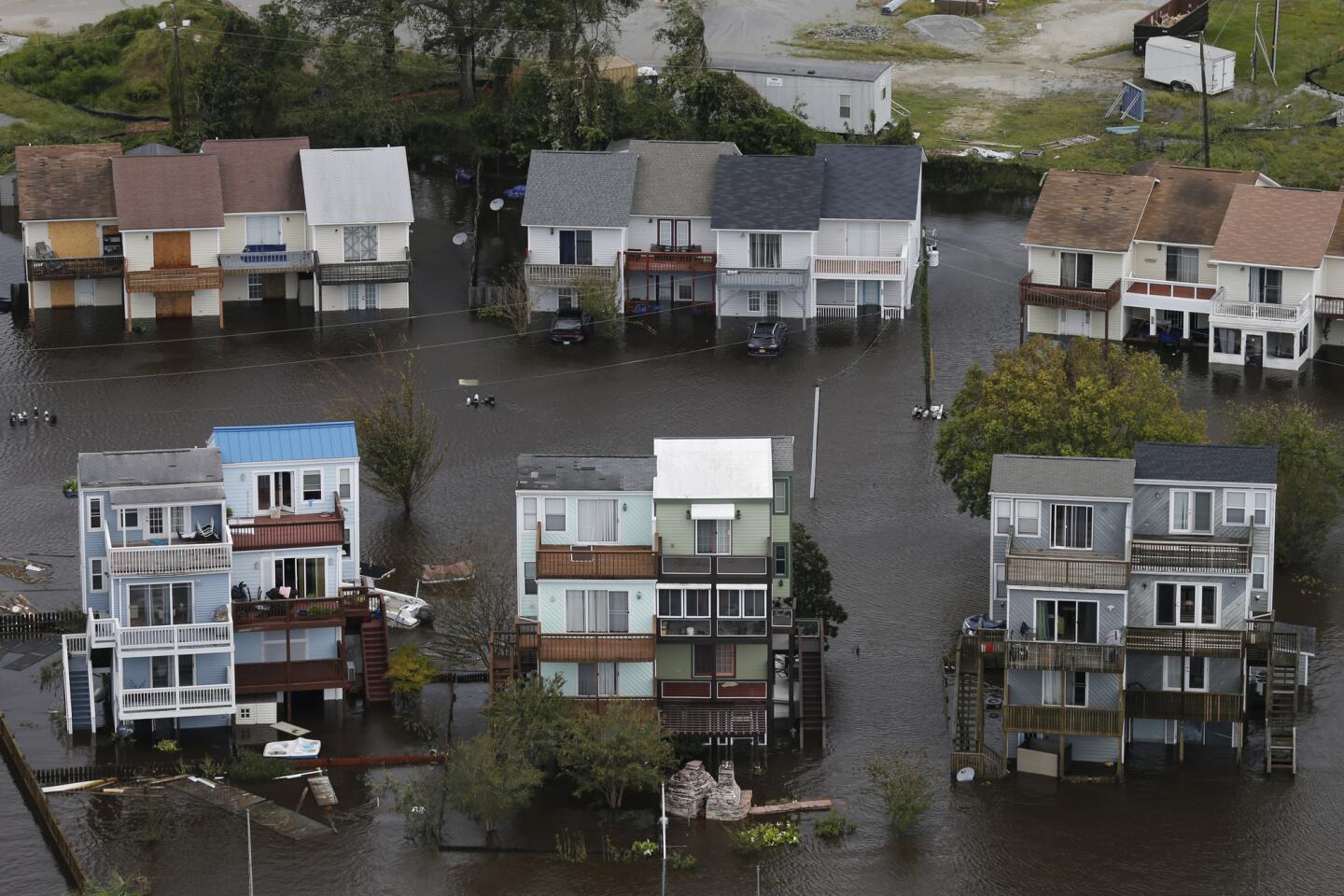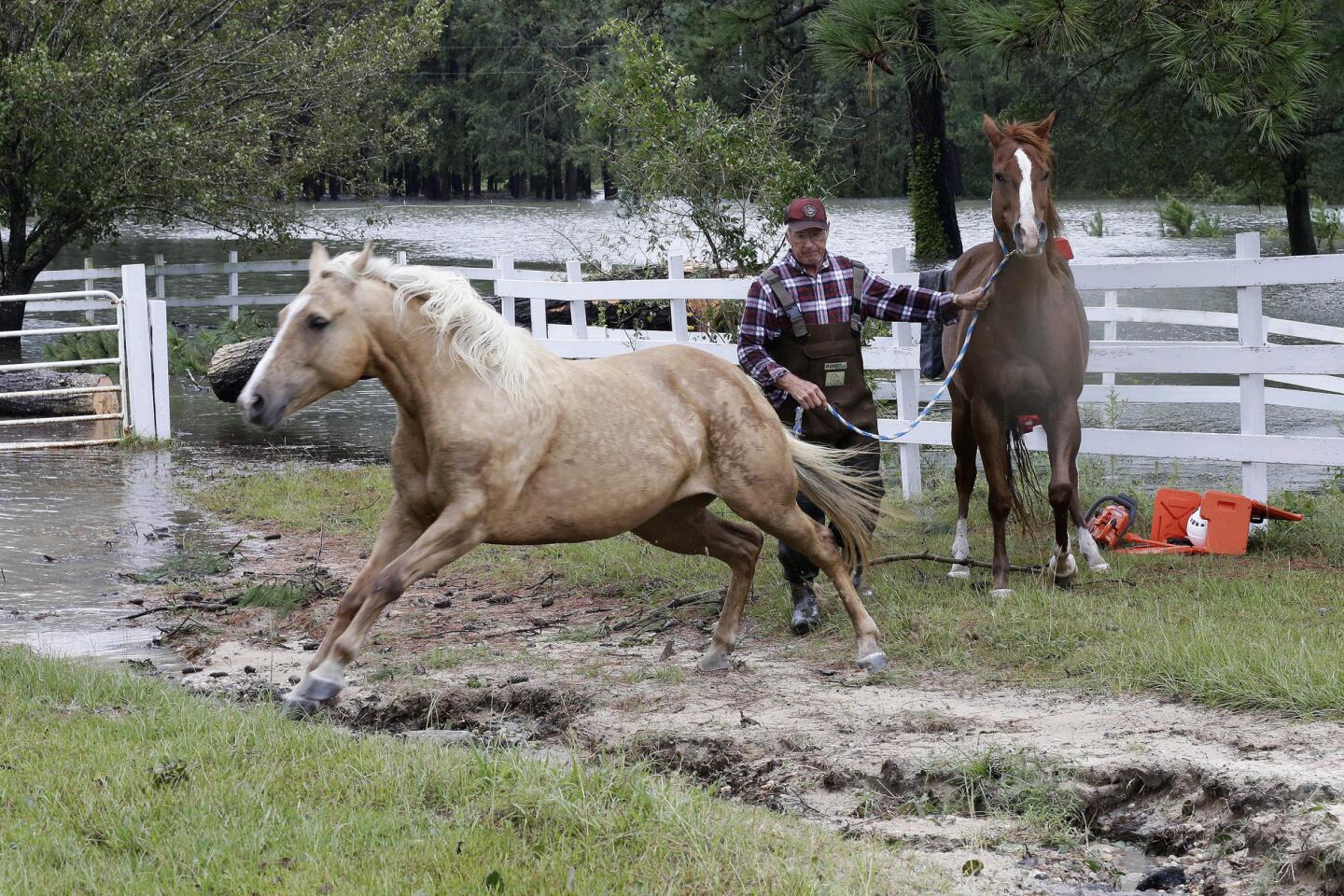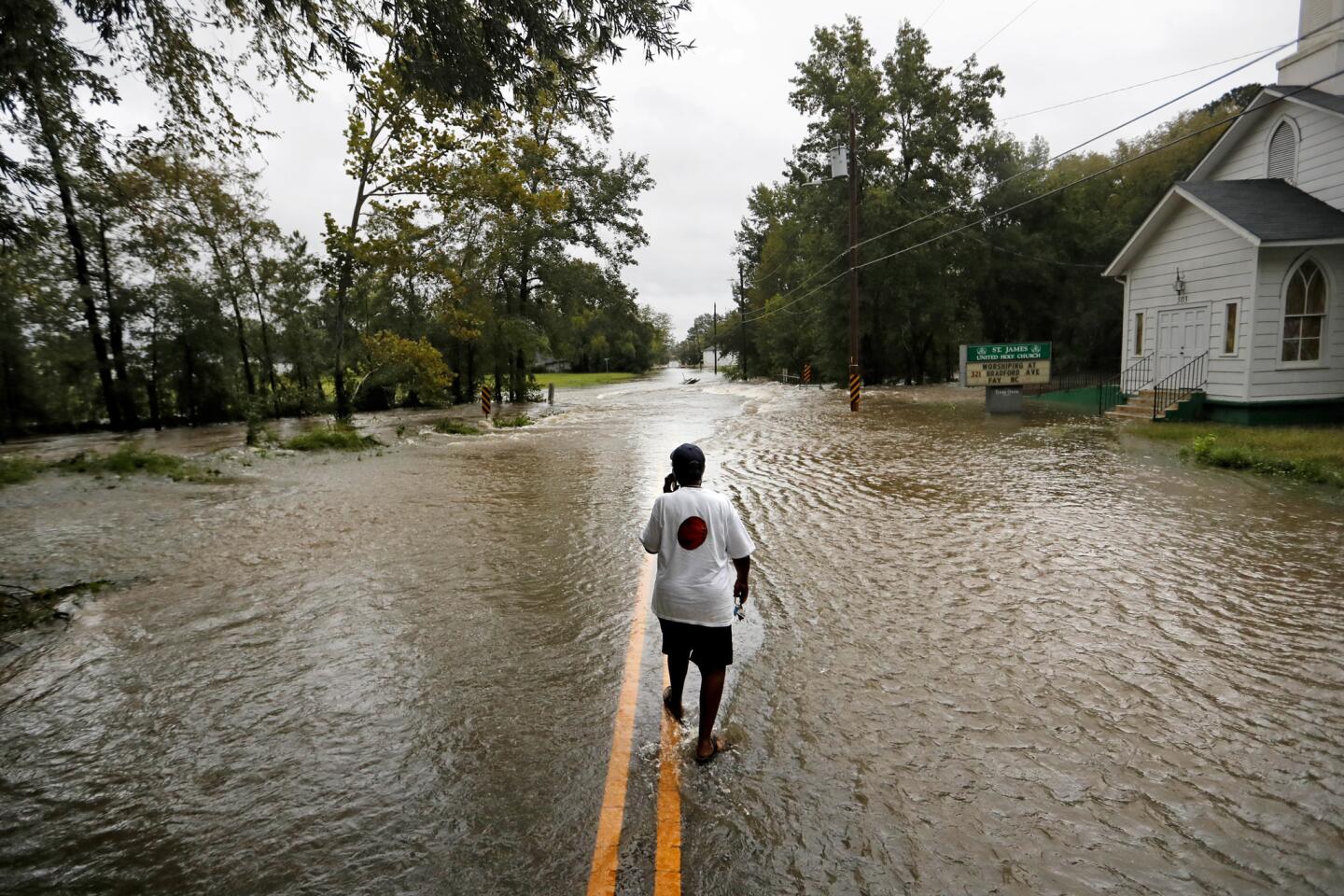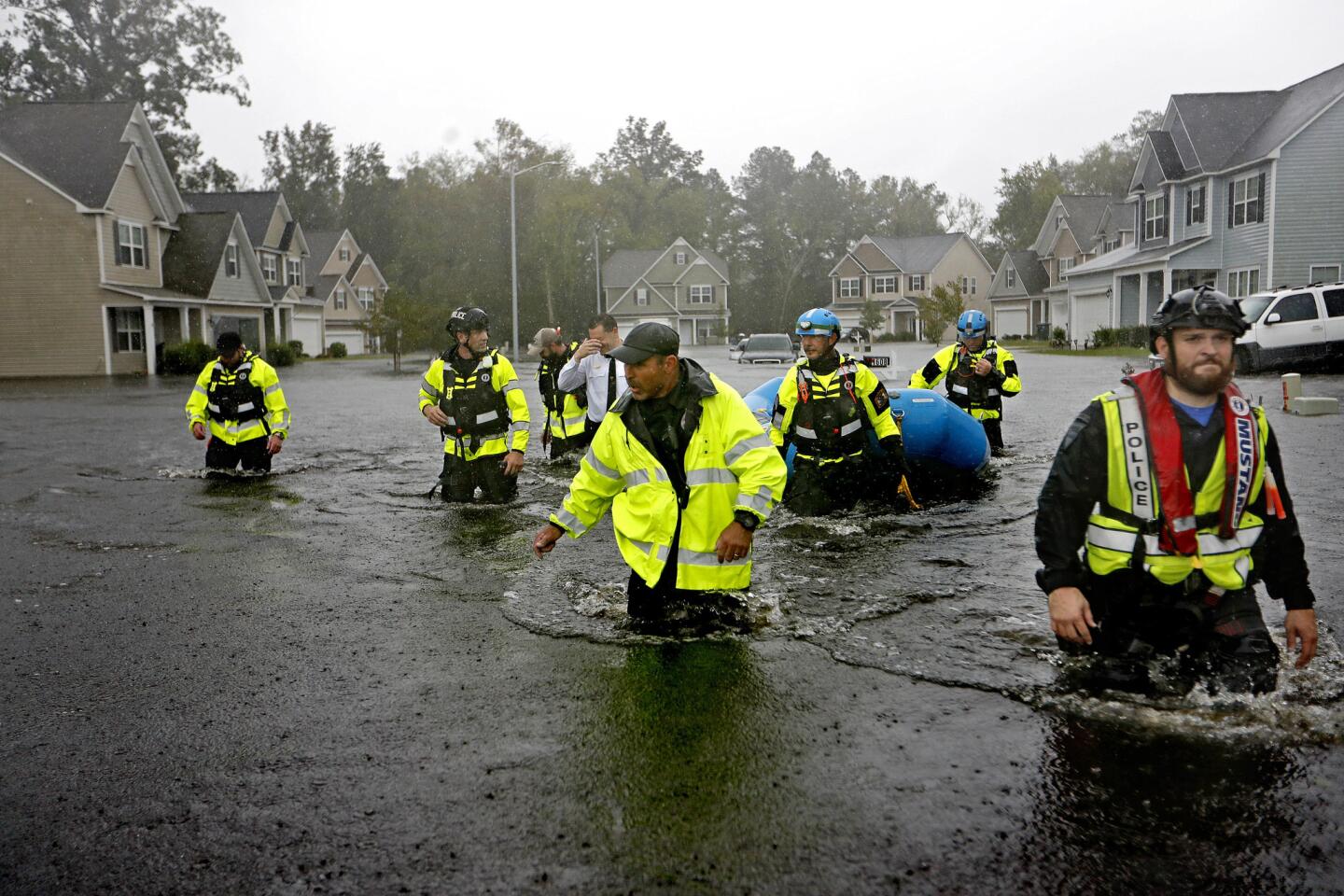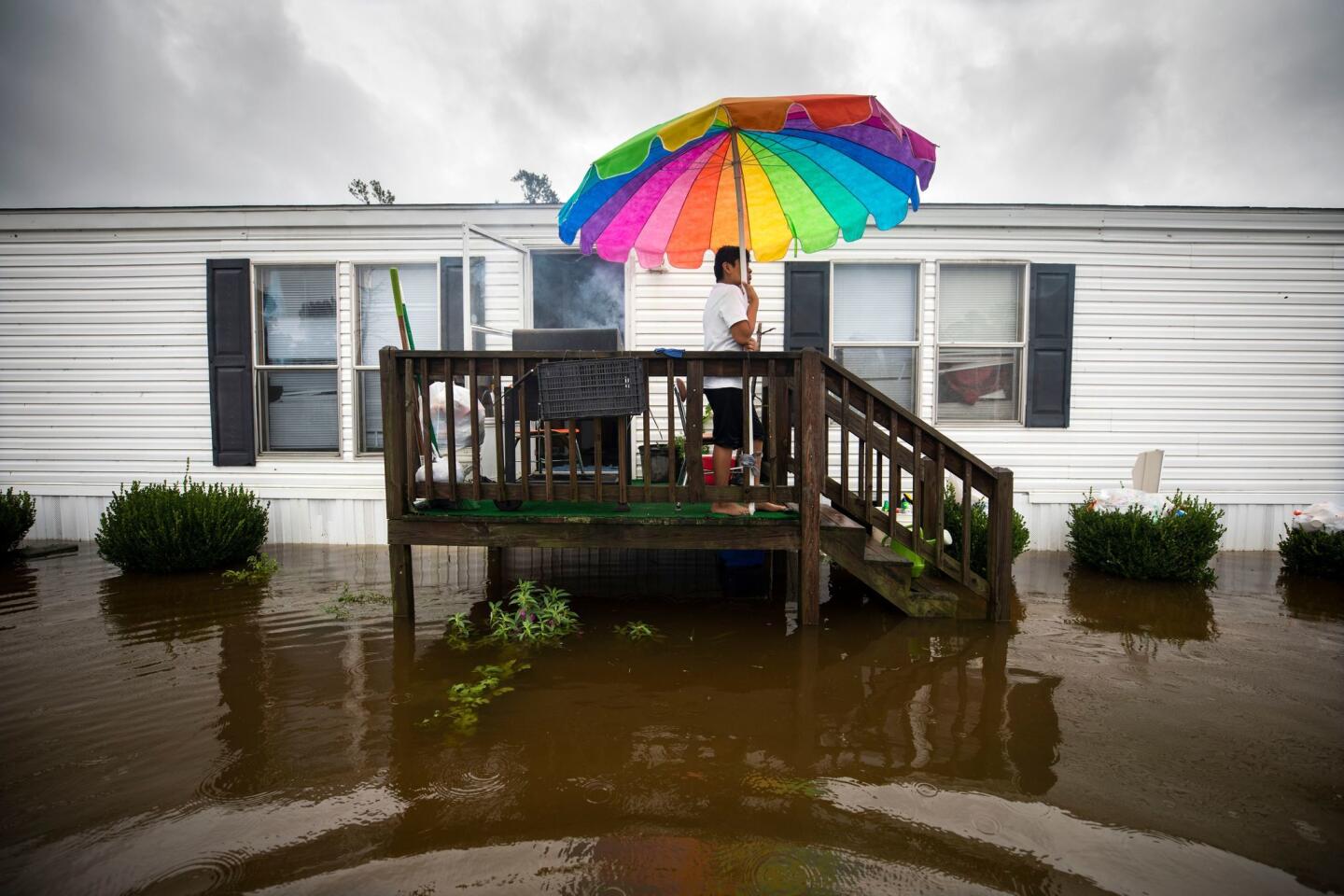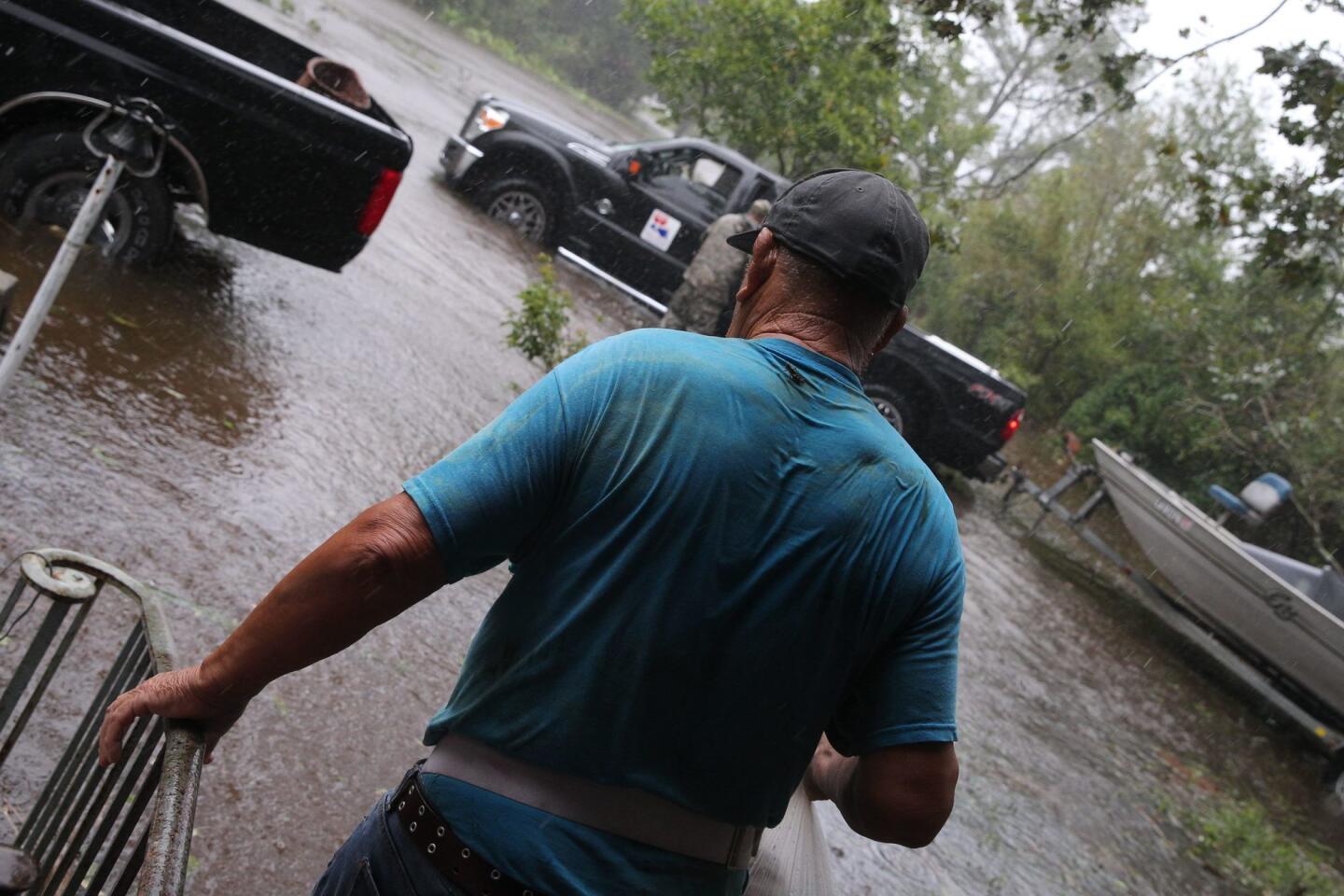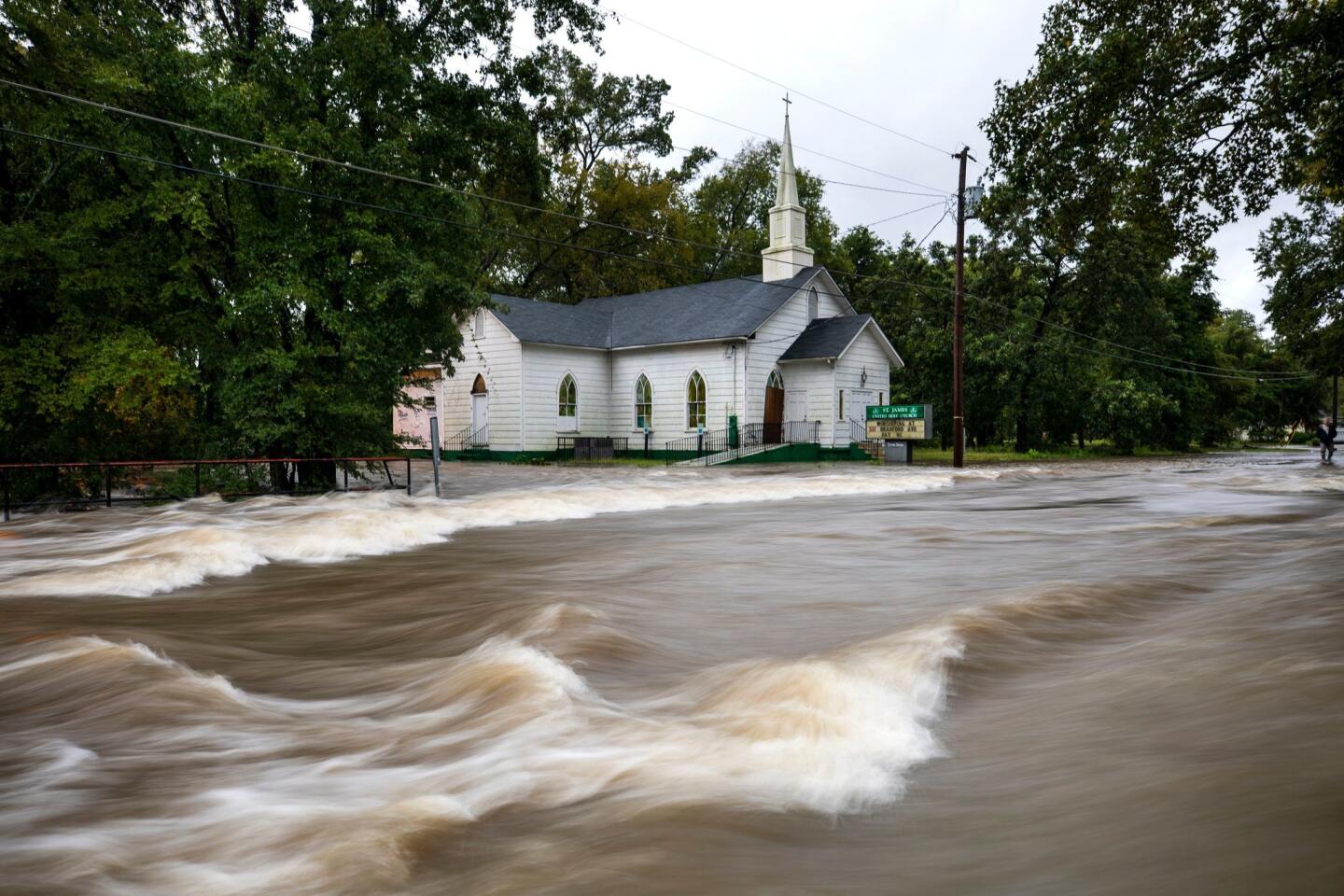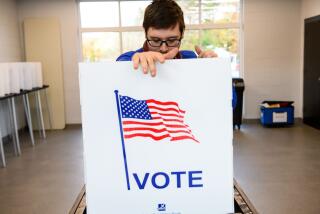When a Category None hurricane is worse than a Category 5
- Share via
Reporting from Fayetteville, N.C. — As Hurricane Florence surged toward land last week, meteorologists and emergency agencies took notice. The storm was a Category 4 hurricane, the second-strongest type, and it was drawing a bead on the Carolina coast.
By the time it made landfall on Friday, however, Florence had been downgraded to Category 1 — and it wasn’t long before it was further diminished to a tropical storm, and then a tropical depression. To some people in North Carolina and South Carolina, that sounded like good news.
The National Hurricane Center begged to differ. It repeatedly warned people that Florence remained highly dangerous, with the potential for catastrophic flooding.
“Do not focus on the wind speed category of #Hurricane #Florence!” the center tweeted, somewhat frantically.
That led some people to wonder: If it’s so dangerous, why doesn’t it carry a scarier designation? Here are some answers to key questions about the Saffir-Simpson Hurricane Wind Scale.
How are storms rated?
Hurricanes are rated according to Saffir-Simpson, which grades them from Category 1 (maximum sustained winds of 74-95 mph) to Category 5 (sustained winds of 157 mph or higher). Ranking below those in wind speed are tropical storms and tropical depressions. The National Hurricane Center describes the damage expected from each category, with language that grows more apocalyptic with each higher number.
For a Category 1 storm, it warns that “very dangerous winds will produce some damage,” and describes it in relatively measured tones: “Well-constructed frame homes could have damage to roof, shingles, vinyl siding and gutters. Large branches of trees will snap and shallowly rooted trees may be toppled. Extensive damage to power lines and poles likely will result in power outages that could last a few to several days.”
By the time it gets to a Category 5 hurricane, the language is terrifying: “Catastrophic damage will occur: A high percentage of framed homes will be destroyed, with total roof failure and wall collapse. Fallen trees and power poles will isolate residential areas. Power outages will last for weeks to possibly months. Most of the area will be uninhabitable for weeks or months.”
Where did the scale get its name?
It was developed by wind engineer Herb Saffir and meteorologist Bob Simpson, who are said to have wanted to create an equivalent to the Richter scale for earthquakes.
So are the most damaging storms always rated Category 5?
Hurricane Harvey, which caused devastating flooding in Houston last year, was one of the two costliest natural disasters in U.S. history, along with Hurricane Katrina. And yet, it was not a Category 5 storm. It was rated Category 4 when it made landfall on the Texas coast, and was downgraded to a tropical depression long before it hit Houston, where it stalled and dumped vast amounts of rain. Water, not wind, caused the damage.
There have, of course, been devastating Category 5 storms, including Hurricane Andrew, which rampaged through south Florida and Louisiana in 1992, killing 25 people and causing $25 billion in damage, much of it from explosively powerful winds. Hurricane Katrina, in 2005, was a Category 5 storm, but it had diminished to Category 3 by the time it hit New Orleans, where it wreaked its worst damage.
Should flooding be taken into account in the storm scale?
Actually, it once was. When the scale was developed in 1972, it included barometric pressure, flooding impact and storm surge — the rise in ocean water that can swamp low-lying coastal communities. But over time, all but wind speed was dropped and the Saffir-Simpson Hurricane Scale became the Saffir-Simpson Hurricane Wind Scale.
According to a report by the National Oceanic and Atmospheric Administration, the scale was simplified for two basic reasons: Wind measurements became more accurate, and there was a realization that storm surge was complicated and difficult to predict. It can change based on the size of the hurricane, the depth of the coastal waters, the hurricane’s forward speed and its angle to the shore.
Thus, the report said, the scale was changed “to help reduce public confusion about the impacts associated with the various hurricane categories, as well as to provide a more scientifically defensible scale.”
That said, it acknowledged that wind speed is also not a perfect predictor of damage, which is “to some degree dependent upon the local building codes in effect and how well and how long they have been enforced.”
Do categories matter?
Yes, at least from a psychological standpoint.
“I like the fact that people pay attention to the category because it gives them something to benchmark against,” said Michael Cramer, town manager for the island community of Carolina Beach in southeast North Carolina. “Most people don’t pay much attention to the details, but they do pay attention to the category and as the categories go up, they get more scared. It helps focus people.”
There’s evidence to back him up. A study by Texas A&M University after Hurricane Rita in 2005 found that people were more likely to heed evacuation orders when they were told the category of the hurricane was higher.
Only about 10% of those surveyed said they would evacuate in the event of a tropical storm, but more than 90% said they’d evacuate in a Category 5 hurricane.
So why not change the scale?
Some people have proposed doing just that.
Lakshmi Kantha, a professor of aerospace science at the University of Colorado-Boulder, published an article in 2006 arguing that it was time for the scale to “retire with dignity.” He proposed a new Hurricane Hazard Index that would have several components, including the size of the storm, the wind speed and rainfall potential.
That, in essence, is what the National Oceanic and Atmospheric Administration argues it has been doing. NOAA has developed new online tools that show predicted rainfall and offer warnings about storm surges. “There are multiple threats with a storm — there is the wind, there is the inland flooding and the storm surge — and all of those various threats are depicted graphically through a variety of Weather Service products,” said NOAA spokesman Chis Vaccaro.
Chick Jacobs, a community writer who has covered weather stories for the Fayetteville Observer for more than 20 years, is among those who believe more should be done.
“It would be nice in the off-season for everyone to get together and say, ‘Okay, the last three big-damage hurricanes that hit the U.S. didn’t hit us with wind. That means you’ve got to change something.’
“There’s got to be some way people can look at announcements and say, ‘Oh man, it’s going to be a Category 2, Rain 5. Jeez, we better get out.’” But, he added, “That’s up to bigger minds than me.”
Jarvie reported from Fayetteville and Landsberg from Los Angeles. Times staff writer Molly Hennessy-Fiske in Conway, S.C., contributed to this report.
More to Read
Sign up for Essential California
The most important California stories and recommendations in your inbox every morning.
You may occasionally receive promotional content from the Los Angeles Times.
